
Hippolytidae is a family of cleaner shrimp, also known as broken-back shrimp or anemone shrimp. The term "broken-back shrimp" also applies to the genus Hippolyte in particular and "cleaner shrimp" is sometimes applied exclusively to Lysmata amboinensis.
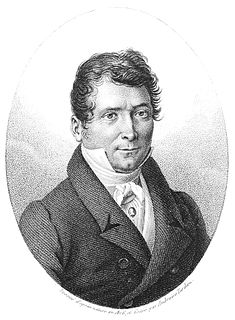
Giuseppe Antonio Risso, called Antoine Risso, was a Niçard naturalist.
Johannes Govertus de Man, was a Dutch biologist. He was assistant curator at the Rijksmuseum van Natuurlijke Historie in Leiden, where he specialised in free-living nematodes and decapod crustaceans, although he also wrote papers on flatworms, sipunculids and, in his dissertation only, vertebrates. His change away from vertebrates disappointed the director of the museum, and de Man left his job there after eleven years. For the rest of his life, de Man worked at his parents' house in Middelburg and later at a house near the shore at Yerseke in the Oosterschelde estuary, relying on his family's private income.
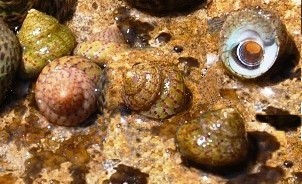
Gibbula is a genus of small sea snails, marine gastropod molluscs in the subfamily Cantharidinae of the family Trochidae, the top snails.

Syritta is a genus of hoverflies, family Syrphidae.

Neverita is a genus of medium-sized to large sea snails, marine gastropod molluscs in the subfamily Polinicinae of the family Naticidae, the moon snails
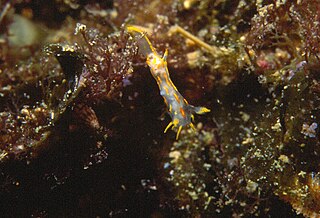
Polycera quadrilineata, is a sea slug, a species of dorid nudibranch. It is a marine gastropod mollusc in the family Polyceridae. The specific epithet quadrilineata means four-lined and refers to the four longitudinal black lines present on the original specimen. This species is sometimes called the fourline nudibranch. In 2020 a integrative molecular and morphological study showed that P. quadrilineata was a complex of two species in the NE Atlantic and one of these species was given the new name Polycera norvegica.

Pilumnoidea is a superfamily of crabs, whose members were previously included in the Xanthoidea. The three families are unified by the free articulation of all the segments of the male crab's abdomen and by the form of the gonopods. The earliest fossils assigned to this group are of Eocene age.

Mangelia unifasciata is a species of sea snail, a marine gastropod mollusk in the family Mangeliidae.
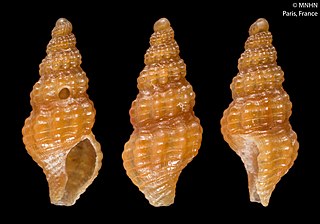
Chauvetia mamillata is a species of sea snail, a marine gastropod mollusk in the family Buccinidae, the true whelks.

Steromphala varia is a species of sea snail, a marine gastropod mollusk in the family Trochidae, the top snails.

Jujubinus exasperatus, the Rough Top Shell, is a species of sea snail, a marine gastropod mollusk in the family Trochidae, the top snails.
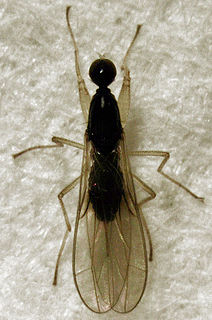
Hemerodromiinae are a worldwide group of predatory flies with raptorial forelegs.

Thoridae is a family of cleaner shrimp, also known as broken-back shrimp or anemone shrimp.
Giuseppe Nobili was an Italian zoologist at the University of Turin, specialising in Crustacea, who was born at Omegna in Piedmont in 1877 and died at Omegna in 1908. His father was Dr. Gaudenzio Nobili and his mother, Adele Antonioli Nobili.

Periclimenaeus is a genus of decapod crustaceans of the family Palaemonidae which is part of the infraorder Caridea. The genus was named by the English carcinologist Lancelot Alexander Borradaile in 1915. He set out the distinguishing features of the genus as:
Body rather stout, cephalothorax deep, a good deal compressed, abdomen greatly curved Thorax without dorsal swelling. Rostrum rather short, compressed, toothed above only. Outer antennular flagellum not deeply cleft. Antennal scale of good breadth. Mandible without palp. Second maxilliped without podopalp. Third maxilliped narrow, with vestigial arthrobranch.

Periclimenes, commonly known as glass shrimp or cleaner shrimp, is a commensal and often symbiotic genus of semi-transparent shrimp within the family Palaemonidae. Species of this large genus feature a wide variety of coloration and patterns, widespread distribution throughout much of the world's tropical oceans, and are often sought out for aquarium trade.













